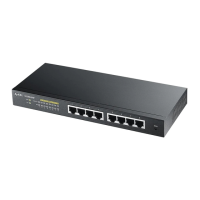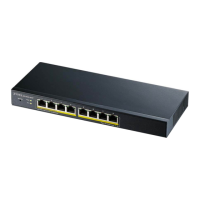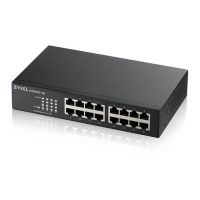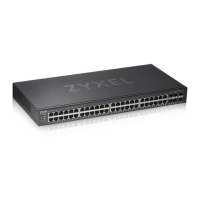Chapter 21 Multicast
GS1350 Series User’s Guide
170
CHAPTER 21
Multicast
21.1 Multicast Overview
This chapter shows you how to configure various multicast features.
Traditionally, IP packets are transmitted in one of either two ways
– Unicast (1 sender to 1 recipient) or
Broadcast (1 sender to everybody on the network). Multicast delivers IP packets to just a group of hosts
on the network.
IGMP (Internet Group Management Protocol) is a network-layer protocol used to establish membership
in a multicast group
– it is not used to carry user data. Refer to RFC 1112, RFC 2236 and RFC 3376 for
information on IGMP versions 1, 2 and 3 respectively.
21.1.1 What You Can Do
• Use the Multicast Setup screen (Section 21.2 on page 171) to display the links to the configuration
screens where you can configure IPv4 multicast settings.
• Use the IPv4 Multicast Status screen (Section 21.3 on page 171) to view multicast group information.
• Use the IGMP Snooping screen (Section 21.3.1 on page 172) to enable IGMP snooping to forward
group multicast traffic only to ports that are members of that group.
21.1.2 What You Need to Know
Read on for concepts on Multicasting that can help you configure the screens in this chapter.
IP Multicast Addresses
In IPv4, a multicast address allows a device to send packets to a specific group of hosts (multicast
group) in a different subnetwork. A multicast IP address represents a traffic receiving group, not
individual receiving devices. IP addresses in the Class D range (224.0.0.0 to 239.255.255.255) are used for
IP multicasting. Certain IP multicast numbers are reserved by IANA for special purposes (see the IANA
website for more information).
IGMP Snooping
A Switch can passively snoop on IGMP packets transferred between IP multicast routers/switches and IP
multicast hosts to learn the IP multicast group membership. It checks IGMP packets passing through it,
picks out the group registration information, and configures multicasting accordingly. IGMP snooping
allows the Switch to learn multicast groups without you having to manually configure them.
The Switch forwards multicast traffic destined for multicast groups (that it has learned from IGMP

